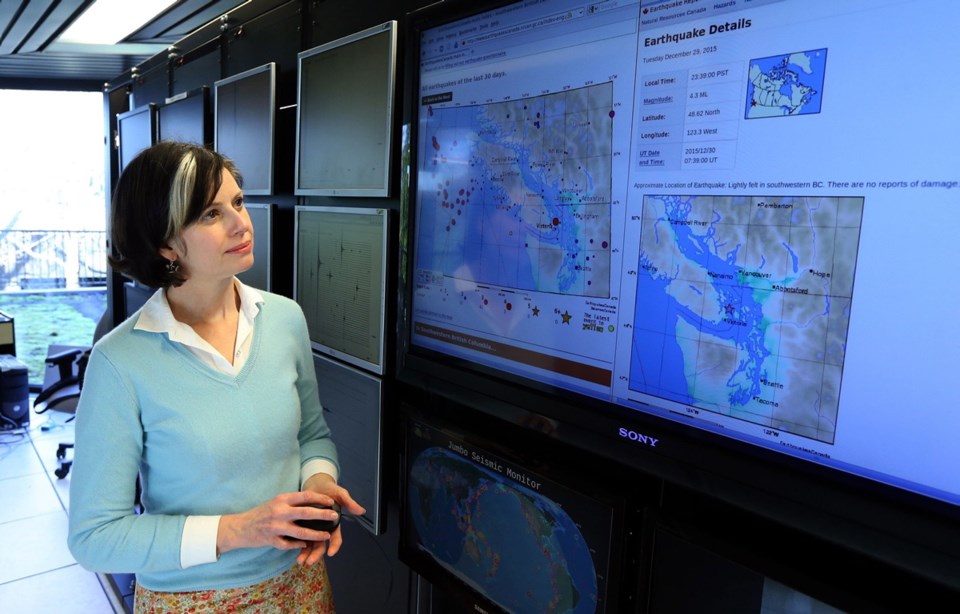Earthquake seismologist Alison Bird has studied earthquakes and tsunamis for 20 years and has one message for Vancouver Islanders: We can live through this.
“If I thought it [a large, destructive earthquake] was as bad as some people seem to think, I wouldn’t live here,” said Bird. “This is survivable, this is do-able.”
The resident of the Saanich Peninsula, who works for Natural Resources Canada, will be a speaker at Ideafest with a presentation titled Shakers, breakers and craters in the Pacific Northwest: Are you prepared for geologic hazards?
> Go to timescolonist.com/more for more articles about Ideafest
Bird said she will risk repeating a message heard again and again by people living on southern Vancouver Island. “The Big One is coming.”
She said seismologists believe geologic tension forces have been building for decades. Southern Vancouver Island has a one-in-three chance of experiencing a mega-thrust, destructive earthquake within 50 years.
“Mega-thrust” and “destructive” means severe shaking for three to five minutes over a broad area, from B.C. down as far as northern California.
Windows will shatter, brick chimneys will crumble and power lines will be cut. Inside, book shelves will topple and heavy furniture not attached to supporting studs will fall over.
But on a brighter side, most houses in Victoria are wood-frame construction and will flex enough to withstand prolonged shaking. A few precautions means most people will survive.
Be prepared — have enough food, water and other supplies to last up to two weeks.
Bird said we have been lulled and dulled into not preparing. The B.C. coast hasn’t experienced a large earthquake since 1949 when one was centred near Haida Gwaii.
But she said seismologists know the West Coast experiences earthquakes every day even if they aren’t felt. They also know the geological structures and forces at play in B.C. and the Pacific Northwest are of a type most likely to cause shaking for minutes on end.
They are also the ones to cause tsunamis.
“We know the stresses are building up for a mega-thrust earthquake,” said Bird. “That is what people refer to when they say ‘The Big One’ and ‘It isn’t a matter of if but when.’ ”
Most people seem to accept that an earthquake is a strong possibility, she said. But they shrug it off as something they can do nothing to prevent.
Bird stresses everyone has to prepare for earthquakes — we should be all be ready to help ourselves, our neighbours, especially those at risk, elders and the young.
“A lot of people seem to say ‘Oh well, it will all be utter death and destruction so why bother even trying to prepare,’ ” she said. “It’s true there will be a lot of damage but not everything will collapse.”
“If you know what to do and you prepare, when you come out the other end you will be a lot more comfortable than if you don’t prepare,” Bird said. “You will survive and be able to help your families, your friends and your neighbours.”
Shakers, breakers and craters in the Pacific Northwest: Are you prepared for geologic hazards? is on Friday, March 9, 3-4:30 p.m. in the Bob Wright Centre, A 104.
> The University of Victoria’s Ideafest — featuring presentations on research and innovation — continues until Saturday. For a detailed schedule, go to uvic.ca/ideafest



